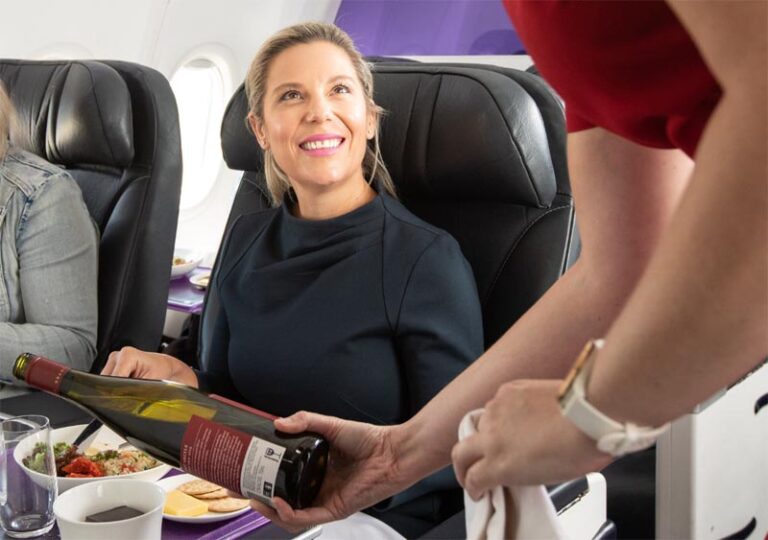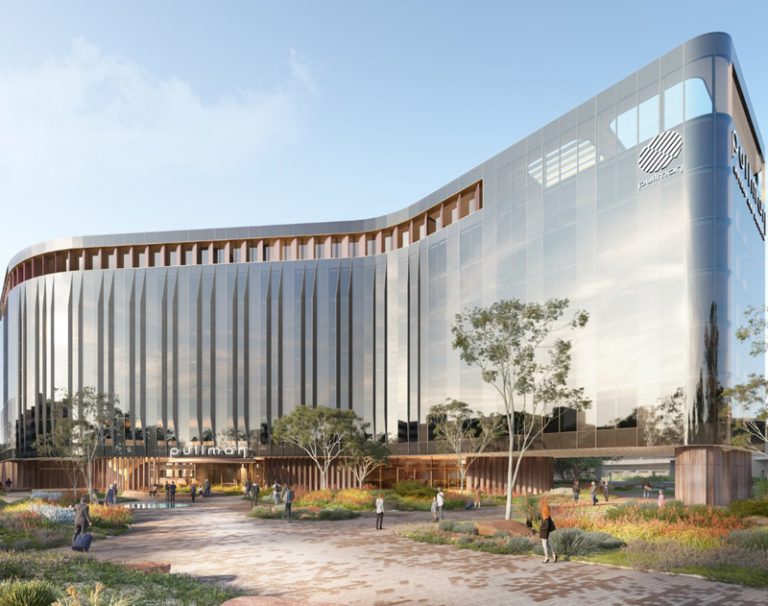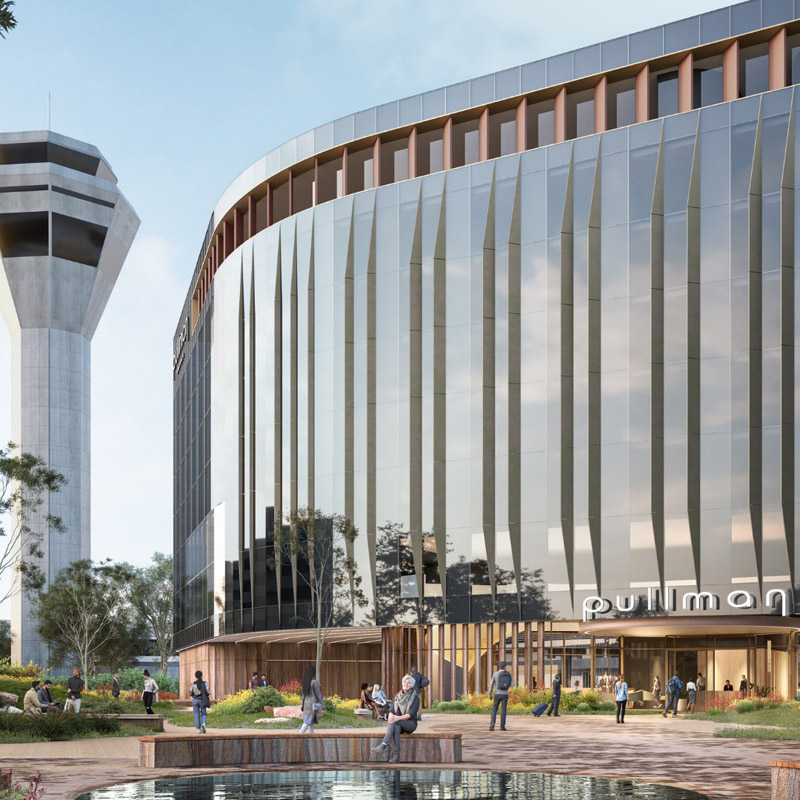Have you ever wanted to sip a cocktail at a bar while flying at 40,000 feet? Or enjoy a nice hot shower in the middle of a long-haul flight?
You may think these kinds of experiences are out of reach, but that’s not the case if you’re a Qantas Frequent Flyer member.
Qantas Points can be used to fly in business and first class with Emirates (which is where you’ll find such luxuries), and this is one of the best uses of Qantas Points.
Emirates is one of the most popular airlines in Australia, thanks in part to its huge international network.
In Australia, it flies from Sydney, Melbourne, Perth, Brisbane and Adelaide to its Dubai base and onward to destinations across the world.
Want more Qantas Points? Get 50,000 bonus points + an annual $450 Qantas Travel Credit with the ultimate card for Qantas Points, rewards and benefits: the Qantas American Express Ultimate Card – ends soon!
The Emirates Experience
Emirates’ long-haul fleet comprises Airbus A380 and Boeing 777 aircraft.
All aircraft that fly to Australia have business and first class cabins. However, some of these are older while others have been modernised and refreshed. It’s a matter of luck which version you’ll get at the moment.
I’ve reviewed Emirates’ ‘old’ business class and first class on the A380s, so you can read those posts for a detailed overview of what to expect.
First class is excellent on both aircraft, with spacious seats and top-notch dining and service.
Business class is reliably good on the A380s, with more space, fully lie-flat seats, and direct aisle access for every passenger thanks to the 1-2-1 layout.
On the 777s, there’s an outdated 2-3-2 ‘angled-flat’ seating layout. Most 777s are now in the process of being refreshed with new seats in a 1-2-1 layout, but that process will take some time.
The onboard bar (available to both business and first class passengers) and first class shower are exclusive to the A380s. So, in short – aim for the A380s if you can!
(Elsewhere in the world, you’ll also find a 777 configuration with no first class cabin and 2-2-2 in business class, and several A380s with no first class. There’s also a small number of 777s with six fully enclosed suites in first class – which are among the best first class products in the world – but these are hard to find and book with points.)
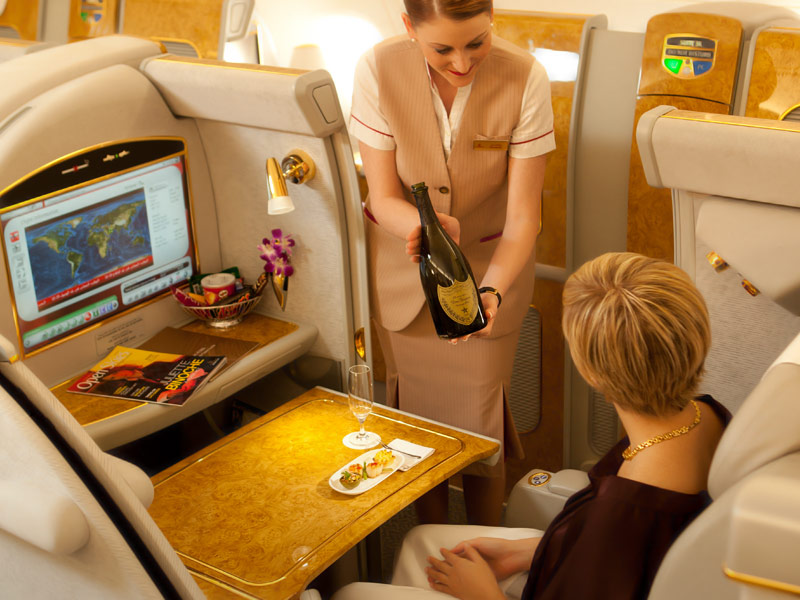
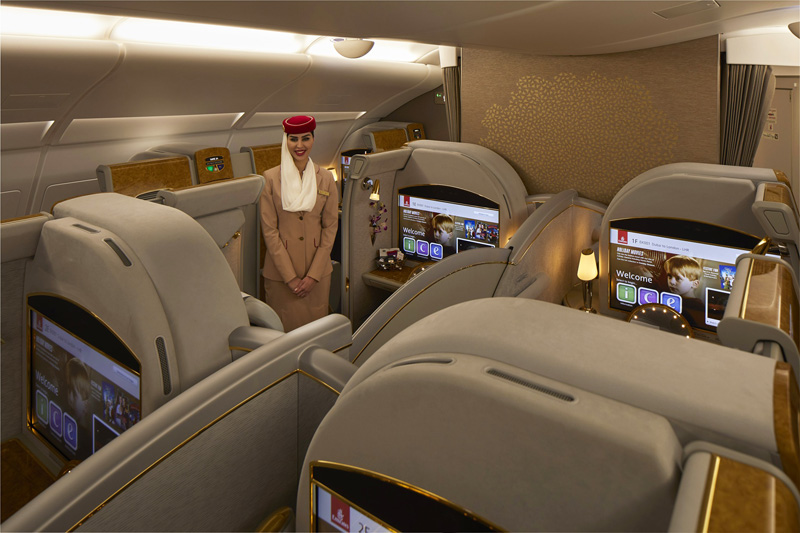
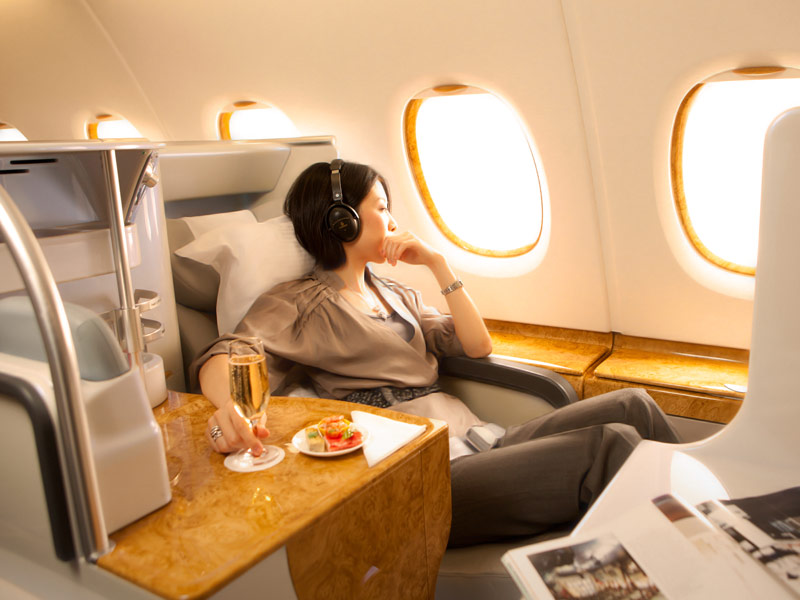
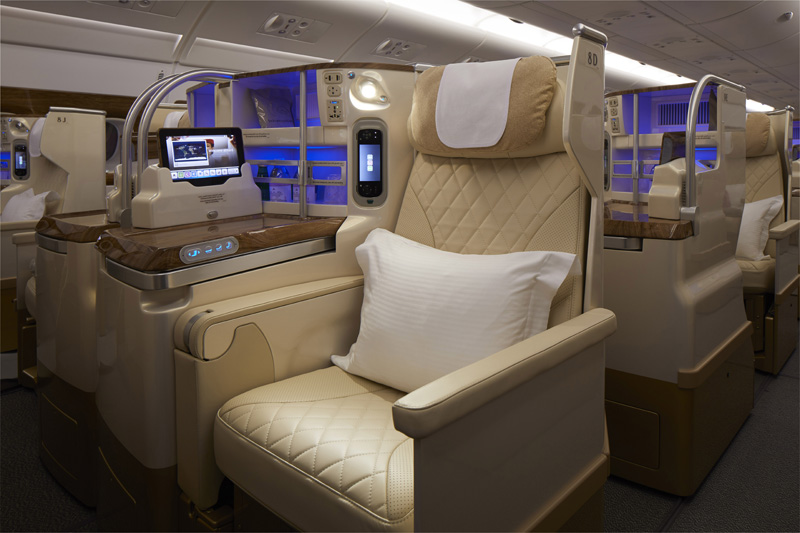

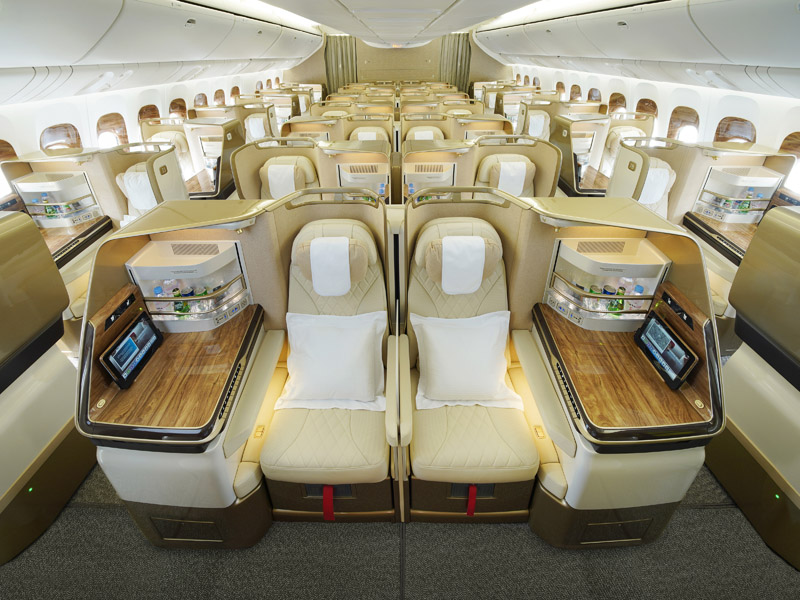
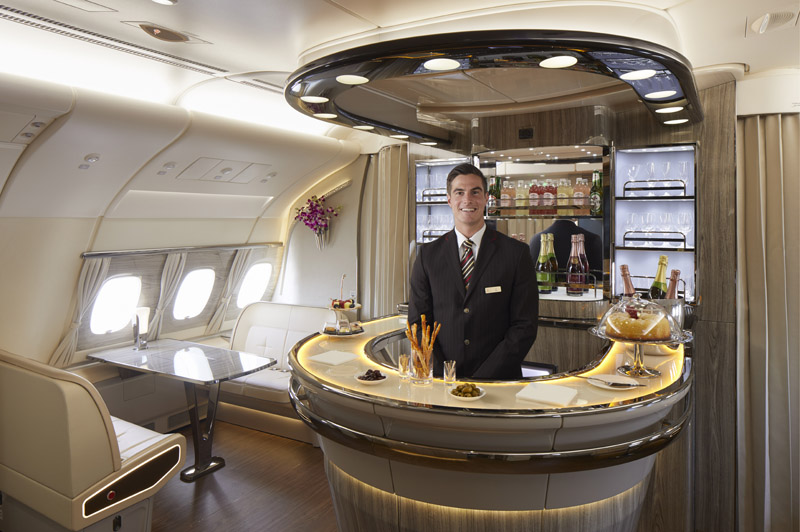
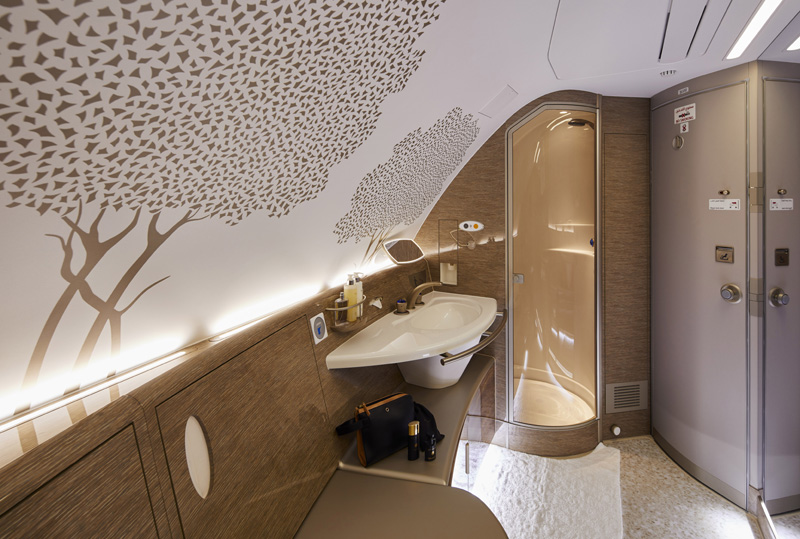
Emirates operates an extensive lounge network. In Dubai, the lounges are huge and essentially mini terminals in their own right. First class passengers can board directly from the lounge in Dubai.
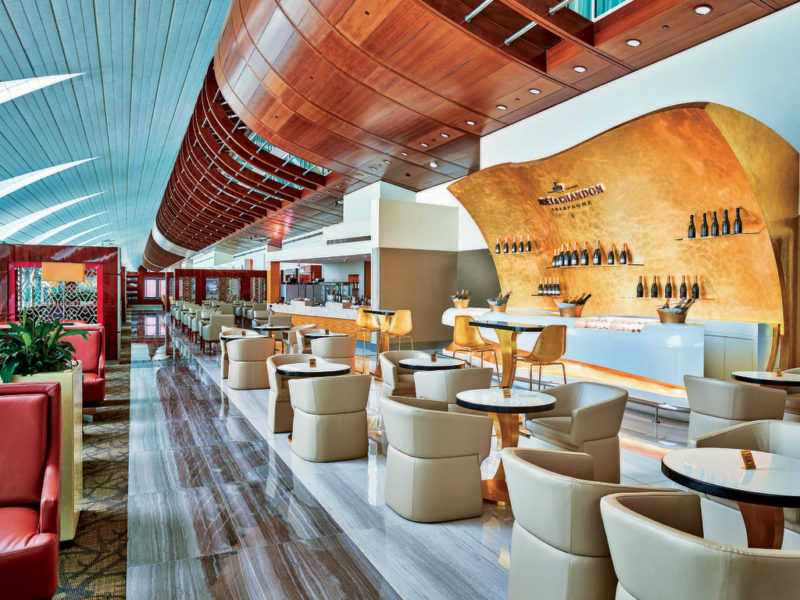
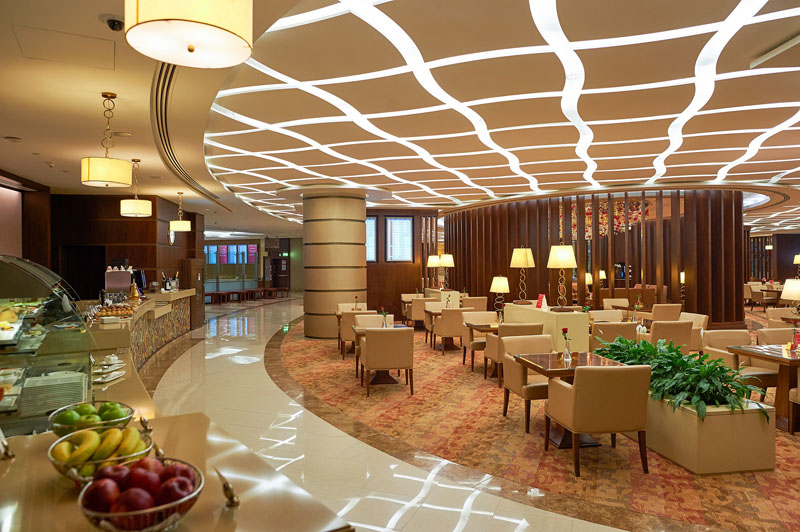
How to book with Qantas Points
You can use Qantas Points to search for and book reward seats with Emirates on the Qantas website.
You can’t use Qantas Points to upgrade a cash fare to a higher class of travel on Emirates-operated flights.
To search for reward seats, use the multi-city booking page, even if you only want to book a single route, because the search results will appear in a handy monthly calendar view (make sure to tick “Use points – Classic Flight Rewards only” and “Flexible with dates for all flights”).
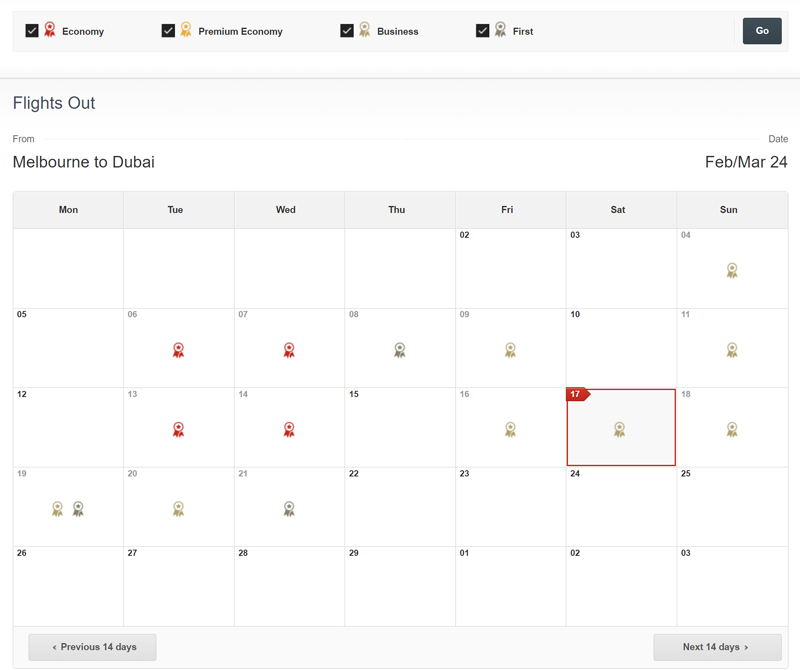
When you identify a seat and click through to the next page, you’ll see the flight details and points cost, and then the subsequent page will also display the additional taxes and fees payable with money.
Points costs, taxes and fees
The amount of points you’ll need is based on distance, as follows.
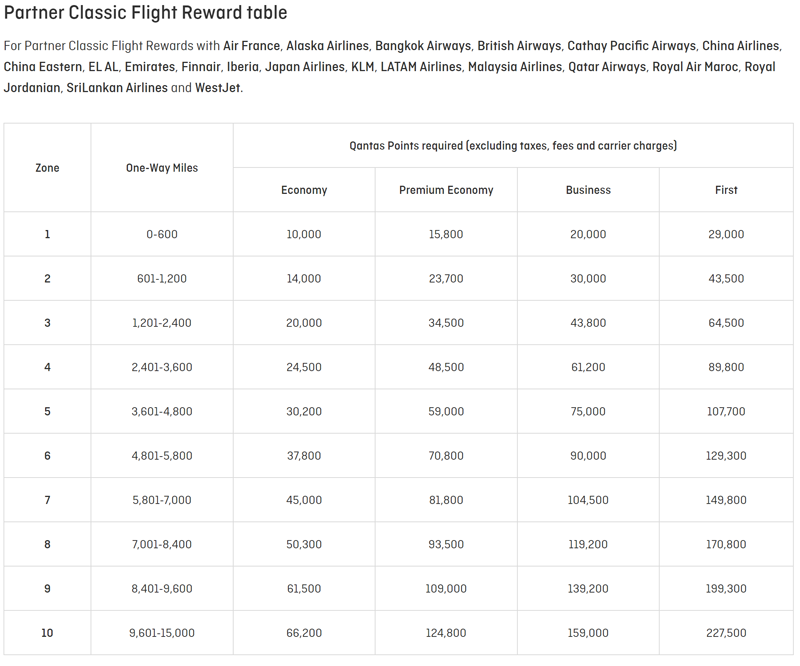
Emirates recently increased the additional fees payable, so they can now add up to thousands of dollars, unfortunately.
For example, you’re looking at $3000-$4000 in taxes and fees when flying Australia-Europe return in business or first class. This is disappointing and substantially reduces the value of the redemption in business class, though first class still represents a good deal.
Shorter flights will have lower fees and charges.
Reward seat availability
Sadly, Emirates has reduced the number of reward seats available on popular routes in recent years.
The airline used to reliably release seats around 330 days out on all flights, but now it’s more erratic.
It appears Emirates sometimes releases seats in batches, probably based on capacity.
The airline also often releases last minute seats (i.e. for the next few weeks), which could be an option if you have that kind of flexibility.
There’s also more availability outside Australia, e.g. from Asia. One popular trick is to make your own way to Asia for a stopover (e.g. Singapore) and then fly with Emirates to Europe, Africa and elsewhere.
Summing up
Using Qantas Points for Emirates first or business class seats is a great option for Qantas Frequent Flyers and one of the best uses of Qantas Points – despite the high taxes and fees.
Right now, seat availability is quite limited, though your chances rise the closer you get to the departure date.
You’ll enjoy comfort on board, high-quality food and drinks, and potentially the memorable experiences of the A380 onboard bar and shower. So aim for first class if you can.
Want more Qantas Points? Get 50,000 bonus points + an annual $450 Qantas Travel Credit with the ultimate card for Qantas Points, rewards and benefits: the Qantas American Express Ultimate Card – ends soon!
To get tips like this delivered straight to your inbox, subscribe to our newsletter:

![How to use Qantas Points to fly Emirates business and first class [2025] How to use Qantas Points to fly Emirates business and first class [2025]](https://thehighlife.com.au/wp-content/uploads/2023/04/Emirates-first-class-dining-800px-768x576.jpg)
![When does Qantas release reward seats? [2025] When does Qantas release reward seats? [2025]](https://thehighlife.com.au/wp-content/uploads/2023/05/Qantas-lounge-web-768x504.jpg)
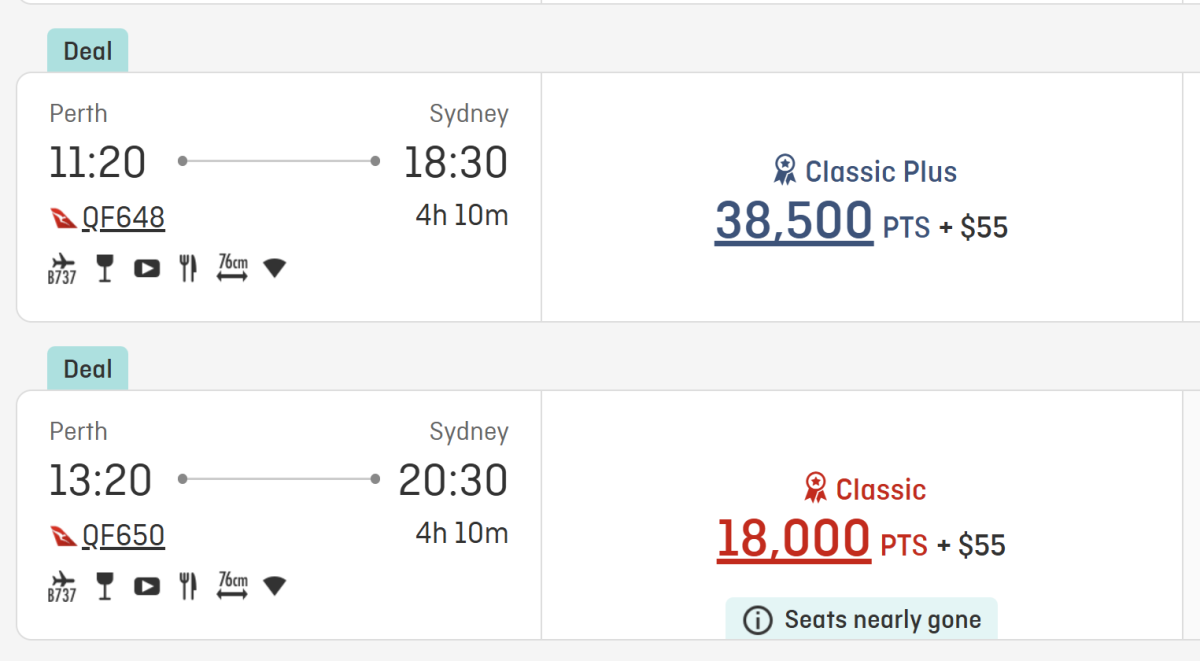
![How to use Velocity Points to book Singapore Airlines business and first class [2025] How to use Velocity Points to book Singapore Airlines business and first class [2025]](https://thehighlife.com.au/wp-content/uploads/2017/11/suites1-web-e1683700851771-768x513.jpg)
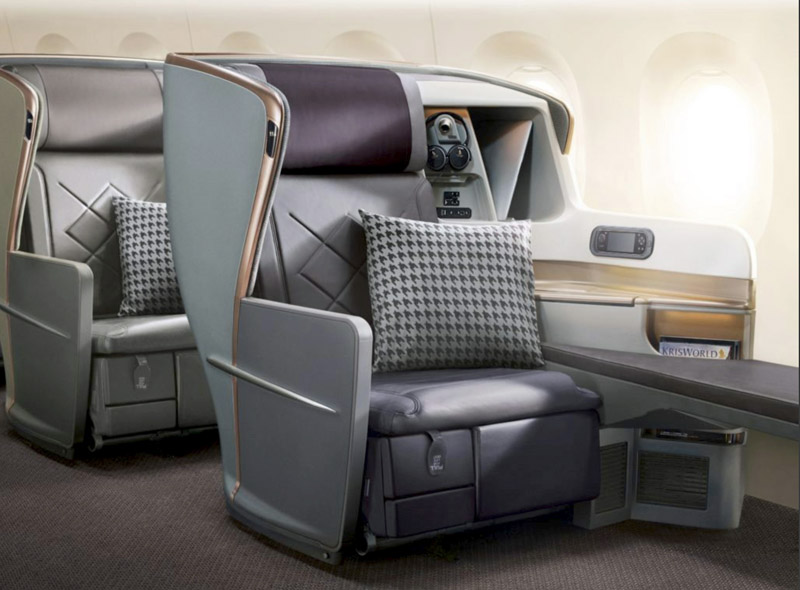
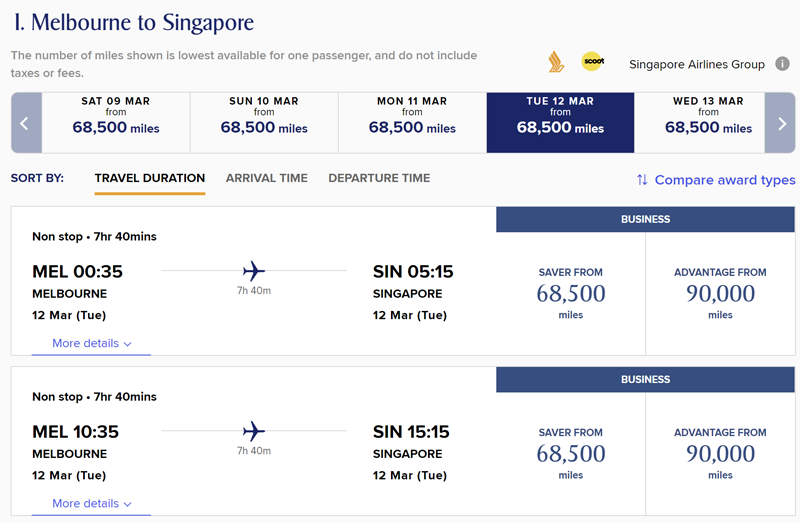
![How to purchase a Virgin Australia lounge entry pass [2025] How to purchase a Virgin Australia lounge entry pass [2025]](https://thehighlife.com.au/wp-content/uploads/2018/01/virgin-australia-brisbane-lounge-FB-768x403.jpg)
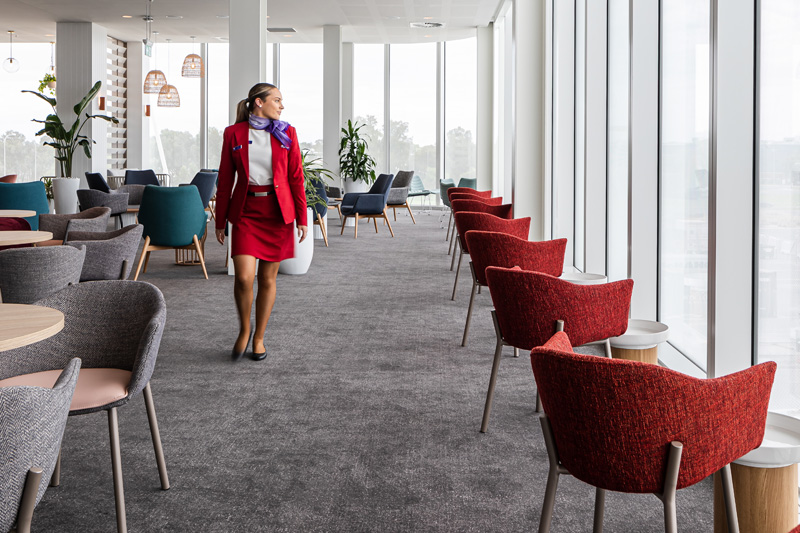
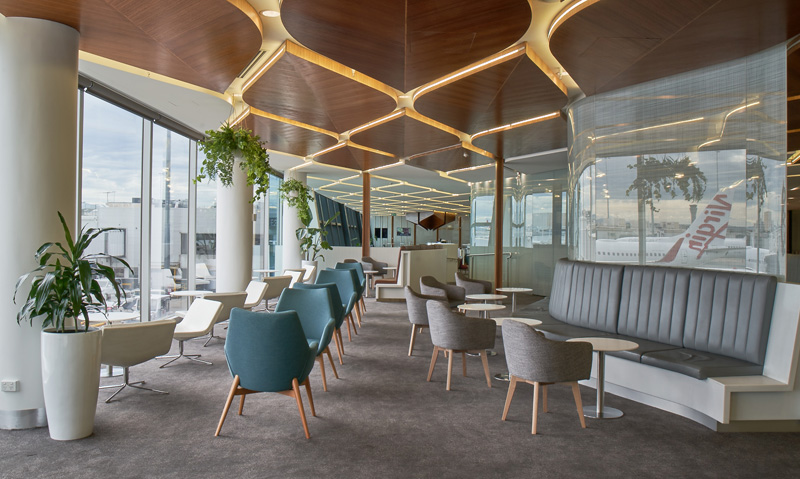
![How to join the Qantas Frequent Flyer program for free [2025] How to join the Qantas Frequent Flyer program for free [2025]](https://thehighlife.com.au/wp-content/uploads/2018/09/Qantas-A380-800px-768x432.jpg)
